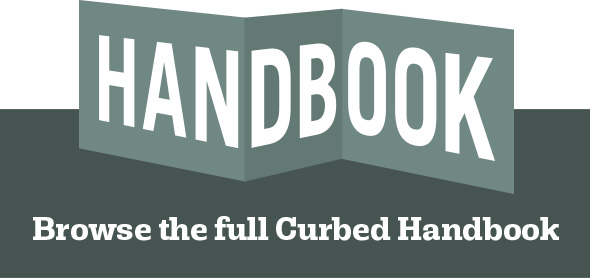Following the 2008 financial crisis, mortgage lending ground to a halt for all but the most perfect of borrowers, and largely stayed that way until recently. Two years ago, lenders began to ease mortgage standards, and today, it’s easier for most homebuyers to get a mortgage than it has been in years.
Updated guidelines from mortgage investment giants Freddie Mac and Fannie Mae relaxed credit score requirements and streamlined the application process, while also creating new programs to help first-time buyers and those with low-to-moderate incomes.
But this doesn’t mean we’ve returned to the lax lending days of the early aughts. Any borrower will need to prove her ability to repay the loan, and provide documentation detailing her debt-to-income ratio. Still, homeownership doesn’t have to be an impossible dream when you understand what’s required to get approved. Here, experts outline the basic standards for getting a mortgage.
Credit score limits
The credit score limit for loans backed by Fannie Mae and Freddie Mac is 620, but many lenders like to see a score of at least 640 for conventional loans. Ginger Wilcox, chief industry officer at Sindeo, says that the best situation for a borrower is to have a 780-plus credit score.
Kevin W. Hardin, senior loan officer at HomeStreet Bank, says, “If you have a credit score over 720, you are going to have very few questions and very few problems.”
That’s not to say you can’t get a mortgage with a lesser credit score. Some loan programs for first-time buyers, like those insured by the Federal Housing Administration (FHA), allow credit scores as low as 500. But the downside is that you’ll have a higher down payment and interest rates.
Another big part of the borrower’s FICO score is determining how much they owe, which calculates as a percentage of the available credit, adds Wilcox. To increase their chances of approval, some borrowers pay off credit card debt or even close out credit cards. Wilcox warns against this because it could have a negative impact by lowering the percentages, which FICO uses to calculate scores.
Income qualifications
One of the main feature of new mortgage standards is that borrowers have to be able to prove that they’ll be able to repay the loan with sufficient income documentation. Lenders generally like to see two years of consistent income.
“We usually like to see one year of payments, deposits, and bank statements and in some instances the probability of it continuing for three years,” says Hardin. “Furthermore, we would like to see two-year employment history and one year of income.”
What qualifies as income? There are categories for non-occupying co-borrowers to co-sign for new borrowers. There’s also something called “roommate rent” that allows a borrower to claim the income from a tenant or family member, to qualify for a mortgage. The borrower must show documentation that proves a roommate arrangement.
Standards for the self-employed
Self-employed individuals have the same loan programs available to them as traditionally employed individuals. As long as income gets reported to the Internal Revenue Service, it can be used to qualify for a loan.
In terms of getting a mortgage, there’s a substantial difference between cash flow and income.
If you brought in $100,000 in cash flow, but wrote off the entire $100,000, then you didn’t make any money in the eyes of the IRS, and therefore a mortgage lender. Because borrowers want to keep more money in their pockets by showing a loss, they take themselves out of the homeownership process.
Hardin says that in the past, stated income or no income loans, allowed self-employed borrowers to simply state that they had $300,000 in cash without proof. Laws passed in 2010 essentially made these types of loans illegal, and today, the Consumer Financial Protection Bureau requires borrowers to demonstrate their ability to repay the loan. (However, stated income loans are starting to reappear for certain types of borrowers.)
Downpayment requirements
One of the common questions among first-time homebuyers is how much do I need to put down on a home? The answer has typically been to pay the industry standard of 20 percent. First-time buyers often find themselves in one of these scenarios: lots of savings and low annual income or sizable annual income and not enough cash reserves.
According to Wilcox, there are plenty of options available to borrowers who don’t have 20 percent to put down on a home. For instance, Veteran Loans (VA) has always been an affordable loan program for veterans. VA loans have always been zero down, had higher debt ratio and greater flexibility, says Hardin. Many states also offer financial assistance programs for downpayments and closing costs, so having substantial savings isn’t always necessary.
Different loans have different standards
As a first-time homebuyer, you want to understand the different options available. Some examples are adjustable rate mortgages and 30-year fixed options. Many borrowers think that the 30-year fix is their only choice, says Wilcox.
“It’s a great option for people who are planning on owning their home for ten-plus years, but for most people, this is not the case,” she says. But, for first-time buyers who know they’ll be upgrading in a few years because they are starting a family, an adjustable rate may provide them with more purchasing power down the road.
The initial steps that first-time buyers take will determine how smoothly the process will be. A borrower’s “first step isn’t a real estate agent,” says Hardin. “Get with a mortgage loan officer and find out what the rules in the game are first. Get qualified first. Get approved for the loan first, then find your realtor and move forward.” Finding a lender that understands affordable housing programs and your financial literacy and picture, will make the loan process less stressful.
Mortgage rules explained, from credit scores to income requirements - Curbed


No comments:
Post a Comment